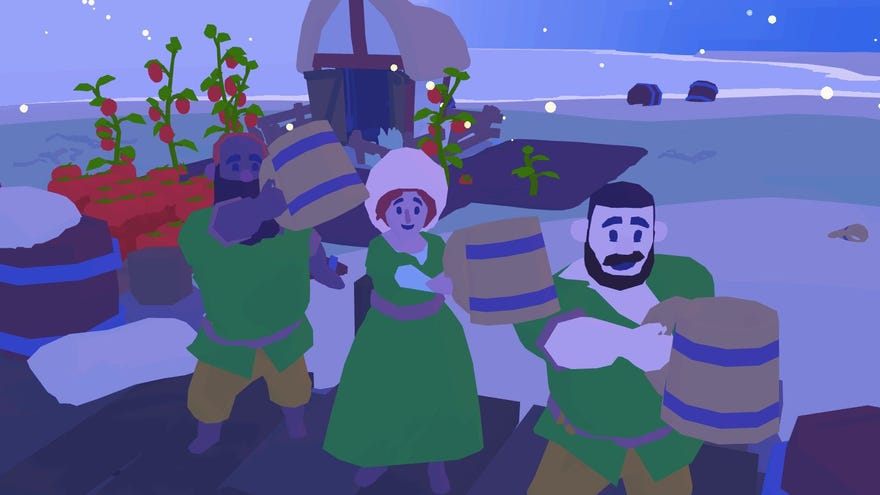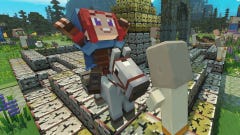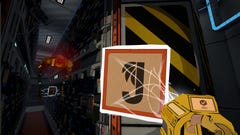Outlanders review: a charming town builder with a hidden sense of humour
A slower pace of life, with food rationing
I'm the sort of person that likes the idea of a rural, low-tech lifestyle, where you have a lovely little wooden house and know all your neighbours, and all your food is locally sourced from the farm down the road - but I'm self-aware enough to know that I'd hate it in practice. In the case of new town builder Outlanders, I'd have to share a house with five other people, the farmer just died of old age, and my leader wanders around doing nothing while occasionally issuing edicts forcing me to have children. But at least there's a chance of pumpkin pie.
It's getting harder to reinvent the wheel that is a town or city builder these days, but Outlanders doesn't reinvent so much as put a different spin on a few things. It's to great effect though, creating a chilled out, cottage-core adjacent vibe for millennials like me, but with enough challenge to remind us that it's hard work out there. The framing for Outlanders is that a group of settlers (lower case) have struck out for new land, so you're building everything up from scratch.
If you've played any town builders before, you'll know a lot of what to expect with Outlanders: your main concerns are food and shelter, with a side of population happiness (largely governed by having access to food and shelter). You can harvest raw materials like wood, stone and crops to refine into other, more useful materials, and build more complex buildings and production lines, until eventually you're producing all the ingredients needed for stew. There aren't loads of supply chains needed in Outlanders, but they're all pretty finely balanced. The more successful you are at them, the larger your settlement becomes, and the harder it is to stay successful.
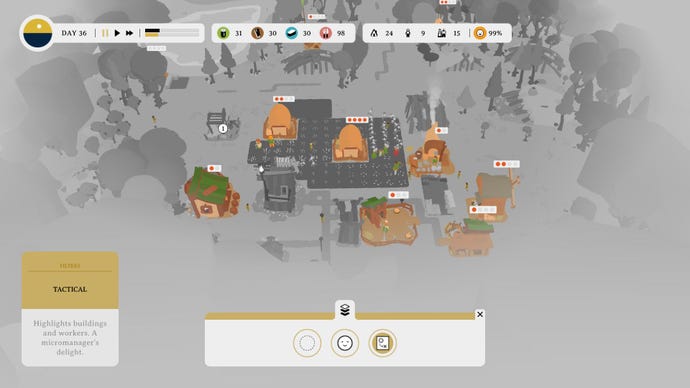
Outlanders knows micromanagement is a big part of the game, and thus has a built-in micromanagement overlay for when you need to keep swapping your workforce around, or see where most of your resource is going.
You quickly realise that your most useful resource in Outlanders is people, which is true in most town builders, but requires much more fine management here. Each building can have a maximum number of workers, the minimum being one, but in the early days of your town you're not going to have enough workers to man everything you need, so you have to shuffle your work force around: one man will be chopping trees for a bit, then turning those same logs into planks, and then be on building duty. Luckily everyone in your town is born with an innate ability to do literally anything, from quarrying stone to making beer, but you have to watch the numbers like a hawk.
You have to keep an eye on things once you have a lot of people, too. Outlanders have a life cycle, starting as children and joining the labour pool aged 16. Your people grow their numbers organically by getting down and dirty, so your population grows exponentially. By the time you hit around 100, you'll spend enough of your time building houses to get a shady government contract.

It's the mid game where things are a bit slow in Outlanders, where your food stores are stable but you don't have enough of an adult workforce to speed things along. There's a lot of waiting around for people to chop trees, and though I admire the animations where your little workers rest and wipe their brow in between planting fields, or eat by smashing a mushroom from your stockpile directly into their head, I mostly only saw them at super high speed. It's a bit of a shame, but I never really saw a reason to play Outlanders at normal speed settings.

You can, to combat your low workforce, make people shag. As the leader you can issue temporary edicts, like to "love each other", or to ration food. The former will make everyone have babies, but at the cost of work efficiency, while the latter preserves food and stops people starving to death, but makes people generally a bit sad. You have to deploy them strategically and be mindful that, e.g., making everyone breed will result in lower harvest yield, an increase in housing, and won't produce more workforce until the kids all grow up at once into presumably very genetically shallow adults - although I had to resort to food rationing quite routinely. It's for your own good.
You learn to deploy your woodcutters and quarries strategically as well, because they're the only way you can clear patches of forest or stone that could be blocking prime farming real estate. Outlanders does give you the option to place roads, but they take up space for building and your builders' time, so I never felt encouraged to build somewhere that looked actually nice, as opposed to the sort of illogical hodgepodge you'd expect if someone with my attention span was given a ruler and town plan. But looking good isn't a win condition, baby.
You'd be surprised at some you do get, though. The campaign is just shy of 30 enjoyable levels of escalating difficulty variable whimsy. One early one sees you challenged to manufacture a lot of bread, to build a pagan bread effigy. A little later I had a memorable time with a level in a largely barren desert oasis, where I was given a fixed wood store, a time limit, and the goal of having 70 people all housed. I missed it by 5 because I instituted enforced breeding too late, prompting a short cutscene where 20 adults cried, surrounded by their 45 inbred toddlers. The themed levels gradually introduce more challenges and concepts, leading you to the more bougie late game where you can grow sugar cane and build a pasta house selling aubergine parmigiana.

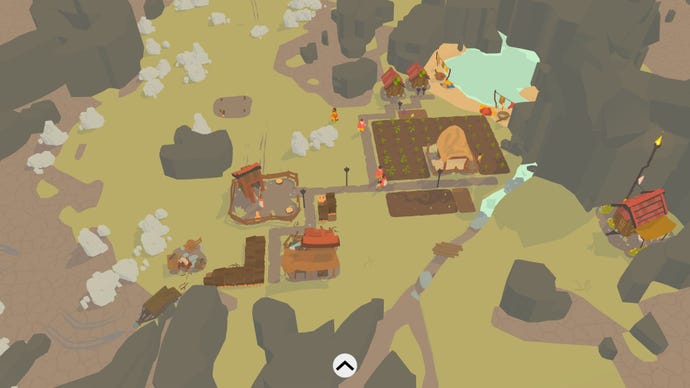
If you want to skip that and get instant access to the more interesting buildings, including pumpkin crops to make the aforementioned pie, lettuce for the salad stand, fancy stone houses, schools and even the humble potato, you can play in the sandbox. It's probably the most relaxing way to play Outlanders, as you can adjust your starting parameters to give you more settlers and ease some of that mid-game slow down, but the campaign has a sense of humour I recommend not missing out.
It's sort of an ever-present undercurrent in the game, though it primarily sells itself as charming and relaxed - and it is - it's pretty funny. Outlanders has a low detail, high impact art style, almost cartoony in how some people have big top heavy shoulders, and how older people become grey and bent over. I love seeing my leader strut around, holding a lantern at night as if checking everyone is in bed. I love the little flute trill that plays when you confirm or cancel an action, swinging up or down like a luxe slide whistle. I love that in this game about settlers building a new life for themselves, you can have a smoothie stand.
